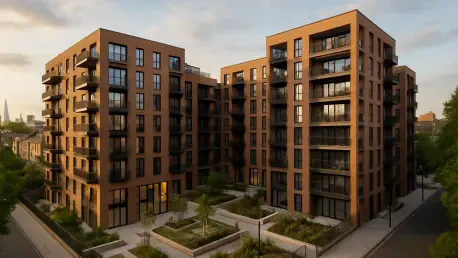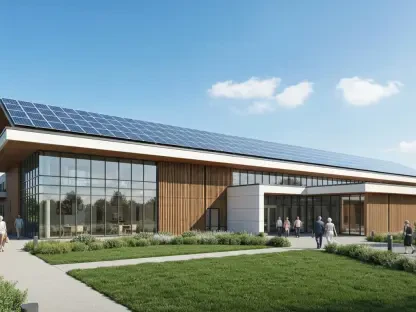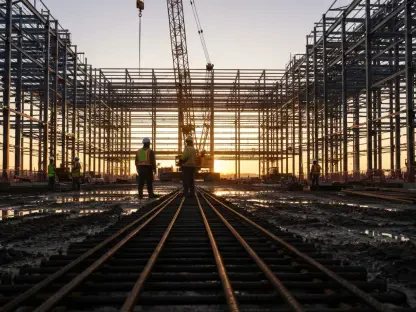I’m thrilled to sit down with Luca Calarailli, a renowned expert in construction, design, and architecture, who brings a unique perspective to the evolving landscape of urban housing. With a deep passion for leveraging technology to innovate within the industry, Luca offers invaluable insights into the Build To Rent (BTR) model and its implications for London’s ongoing housing crisis. In this conversation, we explore the challenges and concerns surrounding BTR, from tenant experiences to investor motivations, and delve into how these developments shape the broader rental market.
Can you share your thoughts on the main concerns surrounding the Build To Rent model in London, especially from the perspective of tenant advocacy groups?
Absolutely, Joshua. From what I’ve observed, tenant advocacy groups are increasingly wary of the BTR model, which was initially marketed as a more professional alternative to traditional buy-to-let setups. The core concern is that BTR isn’t delivering on its promise of stability for renters. There’s a growing sentiment that these developments prioritize profit over people, with operators sometimes pushing for maximum rents and not always providing the secure, long-term housing that was expected. It’s a model that looks great on paper—new builds, modern amenities—but the reality for many tenants can be quite different.
What have you come across regarding how BTR operators interact with their tenants, particularly in terms of rent hikes and evictions?
I’ve heard some troubling stories through industry connections and reports. Some BTR tenants have faced significant rent increases that outpace inflation, which hits hard when wages aren’t keeping up. On top of that, there are instances where tenants have received eviction notices—often without much justification—disrupting their lives unexpectedly. This isn’t universal, but when it happens, it undermines the idea that BTR offers a more tenant-friendly experience. It suggests that some operators are more focused on financial returns than fostering stable communities.
There’s been some discussion about the type of investors backing BTR projects. Can you explain why this raises red flags for some in the housing sector?
Certainly. The worry is about the motivations driving these investors. Ideally, BTR investors should be committed to creating long-term, sustainable housing solutions—thinking about tenants as residents, not just revenue sources. But when you have certain investors, like some private equity firms, their primary focus can be short-term gains. They might push for higher rents or quick turnovers to boost profits, which can destabilize tenant communities. It’s not that all investors are problematic, but the ones prioritizing financial metrics over social impact are a real concern in a city like London, where housing is already so strained.
How do you see the London Plan’s recommendations for BTR, like longer tenancies and index-linked rents, playing out in reality?
The London Plan’s push for longer tenancies and rents tied to inflation is a step in the right direction—it’s meant to give tenants more security and predictability. The idea is that BTR projects should offer a different kind of rental experience, one that’s less precarious. However, from what I’ve seen in the industry, compliance varies widely. Some developers and operators embrace these guidelines, while others seem to treat them as optional. There’s a lack of consistent enforcement, which means the benefits don’t always reach tenants. I think the Greater London Authority needs to take a more active role in monitoring and ensuring these commitments are met.
BTR homes often come with higher rents due to their newer builds. Can you walk us through how this impacts the wider rental market in London?
Higher rents in BTR properties create a ripple effect. These newer, pricier units tend to attract wealthier tenants, which can ease some pressure on older housing stock nearby as those tenants move out. But what often happens is that landlords of those older properties see an opportunity to raise rents too, or they might evict current tenants to re-lease at higher rates. So, while BTR might cater to a specific demographic, it indirectly drives up costs for everyone else. As for addressing the housing shortage, I’d argue BTR is more about serving a niche market than solving the broader crisis—it’s not really reaching those in the most desperate need.
There’s a view that BTR doesn’t directly contribute to social housing needs. Can you elaborate on why this is a sticking point?
It’s a significant issue because London’s housing crisis isn’t just about supply—it’s about affordability and access for the most vulnerable. BTR developments, by design, target a higher-income bracket with their premium rents and amenities. They don’t typically include provisions for social housing, which means they’re not reducing waiting lists for council homes or helping families in temporary accommodation. Without a direct contribution to social housing, BTR is only addressing part of the problem, leaving a huge gap for low-income renters who are arguably in the greatest need.
What is your forecast for the future of Build To Rent in London, considering these challenges and the current housing landscape?
Looking ahead, I think BTR will continue to grow as a segment of the market because there’s undeniable demand for new, well-managed rental properties. However, without stronger oversight and a push for more inclusive policies, it risks becoming a symbol of inequality in housing—catering primarily to those who can afford premium rents while sidelining broader affordability issues. I believe we’ll see more pressure from advocacy groups and policymakers to integrate social housing components into BTR projects or enforce stricter tenant protections. Technology could also play a role—tools for transparent rent tracking or tenant feedback could help balance the power dynamic. But it’s going to take a concerted effort from all stakeholders to make BTR a true solution rather than just a profitable trend.









